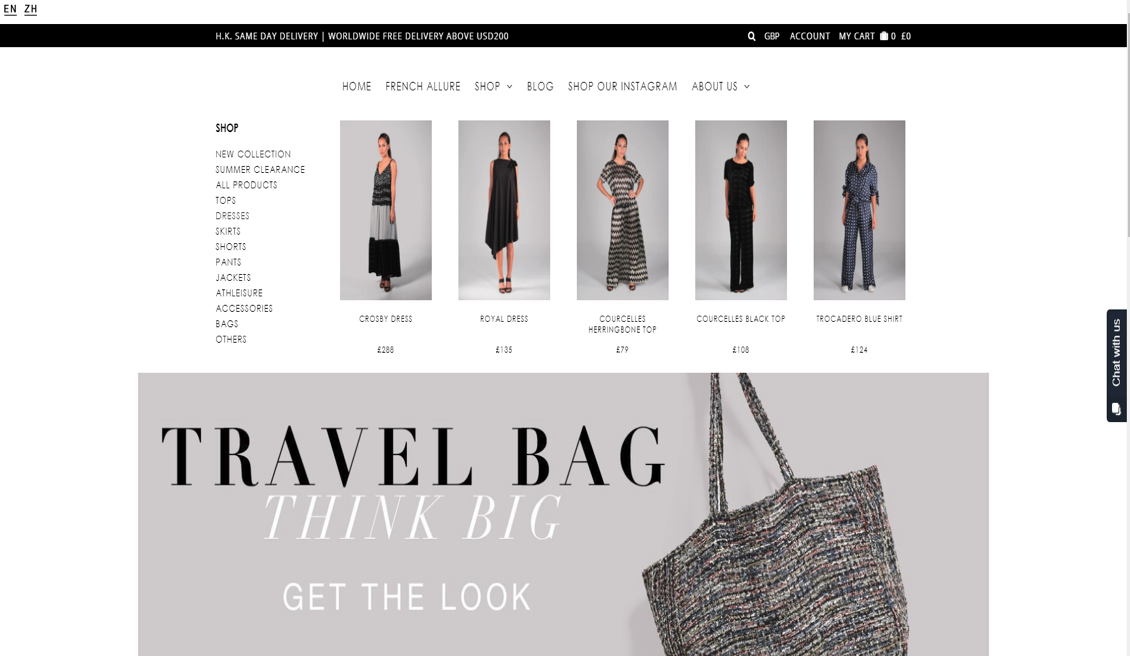Table of Contents
With an estimated value of $179 billion in the US, and still growing (despite the financial crisis) the luxury goods market is a considerable one. As the market expands, so will the number of consumers who shop for high-end goods online. From mobile to social media, luxury brands are getting to grips with omnichannel selling and marketing. As their digital consumer base grows, high-end businesses must evolve their online presence. The main challenge for luxury brands today is ensuring that their software meets the high expectations that they and their customers inherently demand. Here’s why having the right and better software solution is so key for luxury brands.
Visit awesome MessyWeekend website to check how they display their products and how user friendly their platform is!
What makes a product luxury?
If I asked you to name a luxury brand, I’m sure you’d have no trouble answering: Rolex. Cartier. Chanel. But what differentiates them from the everyday, household brands? It boils down to three qualities:
- Outstanding quality
- Impeccable aesthetics
- High price tag that’s easily justified
For any luxury brand, this means that their service needs to reflect and justify these three core qualities. From customer service and store decor, to print and digital marketing, every choice needs to embody luxury and exclusivity. In order to play the omnichannel game and win, brands will need to embrace omnipresent luxury and invest in better software.
Luxury products demand luxury and better software
Their customers demand an omnichannel approach
A luxury brand’s typical, regular customer is someone in a well-paid but demanding job. Lawyers, bankers, CEOs — these are people who are always on the move, on their way to and from meetings, rarely sat at their desk for too long. Most of their shopping will be done online, and not just on laptops either. Mobile devices make up 50.87% of the market share in the US, compared with 44.78% for desktops and 4.35% for tablets.
Evidently, brands need to be able to offer a seamless, user-friendly experience across all devices to cater to their customers’ lifestyles. Operating a luxury bricks-and-mortar store is simply not good enough. Brands need to adopt an omnichannel approach in order to react to the changing retail landscape. You want a potential customer to be able to access a responsive site across desktop, mobile, and tablet devices with ease and functionality, 24 hours a day, 7 days a week. Ideally, you want the customer to be met with personalized offers and deals, and a highly ‘curated’ view of your product catalog. This is no generic ‘one stop shop’.
A key and burgeoning aspect of this omnichannel approach is the implementation of bespoke retail apps that allow for more targeted personalization. 89% of the time users spend on their mobile device is dedicated to applications, indicating a clear opportunity for any business. This app opportunity has already been seized by some high-end brands such as Chanel, who in 2008 launched their own app, Chanel Fashion. Collating fashion news, interviews, and behind-the-scenes photos, the app provides insider insights into the fashion house — solidifying their status as a brand publisher, as well as a retailer.
Bigger transactions call for better security
The last few years we have seen some huge data breaches. From the Ashley Madison hack in 2015 to the WannaCry ransomware attack of 2017, the threat of cybercrime is at the forefront of everyone’s minds. So naturally, with customers spending large amounts and expecting a service to match, safe, secure and better software is a must for high-end brands.
Luxury retailers need to take every step to protect their data. A data breach could result in a huge hit to the brand’s public image, significantly (and possibly irreversibly) compromising its prestige.
Luxury brands should not neglect UX
Luxury brands have traditionally been slower to adapt to technological developments, believing that consumers would prefer to purchase high-end products in-store. With the rise of successful brands such as French Allure (a fashion retailer listed for sale on the Exchange marketplace), coming out of nowhere and successfully cornering online markets, luxury brands need to keep up. They need to embody the in-store experience online and be ready to move fast into new digital markets before the digital natives get there first.
Source: French Allure
When customers walk into a luxury store, they expect to receive a highly personalized shopping experience. Something as simple as an exquisite store design or a glass of champagne upon arrival can help set the tone. Luxury shops often have an overwhelming sense of exclusivity and well-being, with loads of unique detailing.
A luxury brand’s website should reflect what a customer would experience in-store. High-end retailers need to consider UX (user experience) in a very considered way. One of the key challenges luxury brands face when they make the transition to e-commerce is balancing an appealing site aesthetic with pragmatic customer functionality. Web sites are essentially functional: products of software development that’s highly in tune with customer and market demands. A whimsy aesthetic should not compromise UX or usability.
When the London-based fashion brand Whistles relaunched their website in 2009, it was met with some criticism. Despite being visually pleasing, the site was difficult to use and made for a jarring user experience.
They have since redesigned their website, but their story highlights the issues luxury brands face when commissioning a digital product. Namely that of getting design and UX to happily co-exist. Ultimately, brands will need to invest in an agency that can deliver the best of both worlds: a great-looking design with great functionality.
High-quality brands expect high-quality technology
With a demand for UX and tailored personalization from the customer side, high-end brands also demand the same high quality from their development team. Users can tell when a website or app has been poorly made, and a cheap-looking software can make the brand look cheap as well. (Not to mention the potential for a dive in brand equity if the software doesn’t work properly or becomes too delayed in production).
For retailers, co-ordinated project management with access to expert developers is a must-have. Continuous integration will ensure any issues are dealt with as soon as they arise.
Equally, any development team should work closely with the brand to ensure the brand vision is aligned with what they are producing. There is nothing worse than having to abandon a software project over creative disagreements.
All e-commerce stores strive for the best for their users. However, the more high-end a brand’s product, the more high-end the customer expectations will be. Luxury retailers need to develop an omnichannel strategy to provide for their customers 24/7. Functionality and ease of use need to be balanced with a boutique and bespoke aesthetic. And finally, brands need to be able to promise to keep their customer data safe and sound.
About the author
Victoria Greene is an e-commerce branding consultant and freelance writer. For all the latest on developments in e-commerce, marketing, and design, ask Victoria what she’s been up to! Victoria has a passion for helping store owners get the maximum return on their e-commerce businesses.
If you are interested in e-commerce and better software solutions, subscribe to our monthly newsletter here.
And if you found this article about luxury products & better software interesting, you might like…
- Top business blogs to read
- Human-centered innovation
- Top smart city projects to watch
- Blockchain technology: use cases, statistics, benefits, startups & events
- Barcelona; one of the best smart cities in Europe
- Disruptive innovation to track
- The era of unicorns
- Top 20 promising startups in Barcelona
- IOT projects that may change the world
- Tech of the future: technology predictions for our world in 2050











